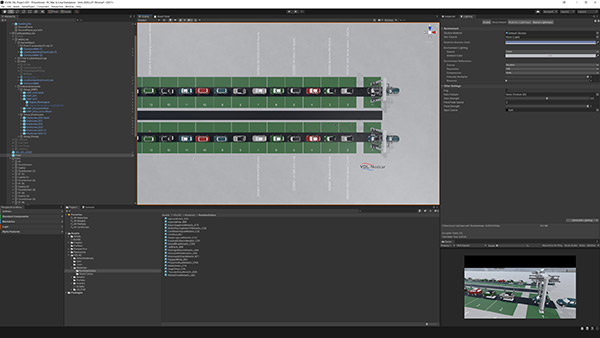Home | Knowledge Bank | How VDL Nedcar anticipated Industrie 4.0 through disappointment
How VDL Nedcar anticipated Industry 4.0 through disappointment

'A major migration is needed, as the last serious update dates back to around 2000,' explains Timmermans. 'The applications are still top of the bill, but it is becoming increasingly difficult to manage and control the entire IT landscape within VDL Nedcar. For example, the hardware of our Manufacturing Execution System (MES) is becoming outdated and the infrastructure is no longer compatible with new technologies.'
Also, the core application 'Apollo' developed in-house by VDL Nedcar, which ensures an efficient production process, is nearing the end of its life cycle. 'Over the past twenty years we have added many blocks and features. We have not always adhered to the architectural guidelines, which has led to inconsistencies,' says Timmermans. 'Especially when Mitsubishi cancelled its contract years ago and we had to switch to production for BMW within a few months, there was not enough time to properly integrate the required new software into the existing architecture. Yet, from the point of view of security and manageability of the data, it was a must. Given that it would involve a significant investment, we opted to start with a clean slate.'
In addition to MES and Apollo, SAP is the third monolithic application within VDL Nedcar, supported by many tools for HR, finance, maintenance, warehouse management and so on. 'SAP has a solution for the automotive industry. Twenty years ago that tool was not mature enough for us,' recalls Timmermans. 'But it has evolved so much that we can now transfer a lot of features from our own Apollo platform to SAP, or to SAP S/4HANA to be precise. The other functionalities, such as the control of internal and external logistics, we build ourselves.'
'We now know that the sky is the limit. And with minimal cost and effort, we have reached that point.'
Pepijn Timmermans, VDL Nedcar
Focus on flexibility and efficiency
VDL Nedcar is already well underway with this extensive IT migration. The MES layer has been completely renewed and is completely up-to-date again. This month we will be able to turn off the old hardware,' says Timmermans. 'This is a big step forward, turning the Born site into a truly smart factory. 'There are so many cross-links between legacy applications and our Smart Industry ambitions. Take something like predicting maintenance. To some, this may not seem like a big deal, but predictability is a highly valued attribute in the manufacturing world. To be as smart as possible with your data, though, you have to first ensure a high degree of digitization.'
For example, one process within VDL Nedcar that created enormous paper consumption was the instruction of the operators on the production line. 'All instructions for the operators were printed out daily by a matrix printer and created a large paper flow,' Timmermans explains. 'Each workstation has a limited number of assigned tasks, but an operator must know, for example, which of the three antennas to be delivered he must mount in the car. He could check that on paper. The process worked, but we couldn't digitally track all jobs in real time or check whether the operator grabbed the right antenna and tightened the bolt with the prescribed momentum.' VDL Nedcar has improved that process on the production line by fully digitizing and equipping each workstation with a flat screen. 'There, the operator can check the order, watch an instructional video if necessary, and record his progress. We digitally unlock the entire organization for the man on the shop floor.'
In the quality process, the same digitization step has been taken. No more notes on paper when a problem arises, but a digital quality environment in the MES layer. 'In the repair shop they can now scan the car's barcode and immediately get a complete overview of all outstanding problems,' says Timmermans. 'You have to digitize those processes before you can move to Smart Industry. You can't separate one from the other.' The transition to Industrie 4.0 is essential for VDL Nedcar's competitive position. 'We don't develop products, we develop processes,' explains Timmermans. 'Large car manufacturers may have thirty production sites worldwide, for which they develop and manage applications centrally. We need the same applications, but unfortunately do not have the same budget. So we have to bet on flexibility and efficiency.'



"We ask our people to come up with ideas and proposals. With as little effort as possible, we explore what those suggestions or new technologies will bring to the company."
Real-time overview
As part of the Smart Industry program, VDL Nedcar encourages its employees to participate in thinking about innovations. 'We ask our people to come up with ideas and proposals. With as little effort as possible, we investigate what those suggestions or new technologies will bring to the company. If the benefits are big enough, we start a pilot and proceed to implementation as soon as possible,' explains Timmermans. The innovations can be anything from robotics and smart wearables to smart maintenance, analytics and simulation. Central to VDL Nedcar's Industrie 4.0 strategy is a digital twin of its production site. 'Most manufacturers will start by creating a virtual production process, optimizing it and using virtual applications to design, install and test the end result,' says Timmermans. 'At VDL Nedcar, we decided to build a digital twin of the current factory. After all, the real value for us is in finding the most efficient way to use our resources.'
Timmermans interviewed all major application vendors after which VDL Nedcar built a demo version with the support of an implementation partner. 'Then I met people from Prespective and they immediately understood what I wanted,' recalls Timmermans. Together, VDL Nedcar and Prespective built an enhanced digital twin demo of the factory, which can be fed into real-life processes on the shop floor. The twin is a turnkey solution that Prespective developed for the manufacturing industry. At VDL Nedcar it is now being applied for the first time in the automotive industry. From his home office, Timmermans gives a demonstration. 'Here you see the situation in Born in real time,' he says. 'Apparently they are working on a MINI Countryman at this station now and a MINI convertible at the next one. I can click on the virtual flat screen to see the ordering information and see what instructions the operator gets.'
The way to go
Surprisingly, the implementation of the digital twin at VDL Nedcar is not driven by a specific business case. 'This first step was to show that it works and to find out what is technologically possible,' says Timmermans. 'We now know that the sky is the limit. And with minimal cost and effort, we've reached that point.'
VDL Nedcar is currently describing the first use cases. Timmermans gives an example: 'If we are going to work with automated guided vehicles in our production environment, it can happen that one breaks down. A mechanic will then have to rush to the vehicle's location and fix the problem. But maybe the failing AGV isn't blocking the process at all, so it's not a priority, or maybe we can use a routing system to guide the other AGVs around it. Based on a detailed digital twin of the plant floor, we could develop such a prioritization mechanism or a scheduler.'
It's interesting to consider that you don't necessarily have to implement a digital twin if it's based on a hard business case, Timmermans argues. Take it from me that the whole world is becoming increasingly digitalized and that digital twin technology is a powerful tool for gaining maximum benefit from this. Once the digital twin is up and running, you can also use it for simulation purposes, so that you can implement updates and changes more quickly and efficiently. In short, digital twinning is the way to go.'
Source: https://prespective-software.com/
TIP
This is the headline
It's interesting to consider that you don't necessarily have to implement a digital twin if it's based on a hard business case, Timmermans argues. Take it from me that the whole world is becoming increasingly digitalized and that digital twin technology is a powerful tool for gaining maximum benefit from this. Once the digital twin is up and running, you can also use it for simulation purposes, so that you can implement updates and changes more quickly and efficiently. In short, digital twinning is the way to go.'

Unit040
We are Unit040. We merge Virtual and Physical worlds. Our Digital Twin platform, PREspective, allows users to simulate the behavior of a system even before it exists.